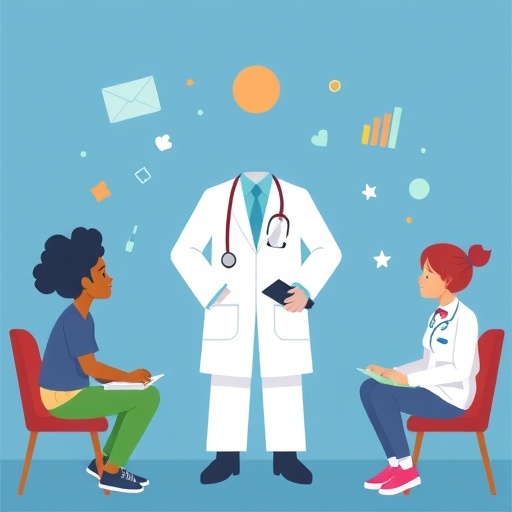In recent years, the complexity of medical education has significantly grown, fueled by advancements in technology and a deeper understanding of human anatomy and pathology. With these advancements, the importance of education tools such as illustrations has never been more pronounced. Traditionally, medical illustrations were often limited in representation, predominantly featuring predominantly white and male subjects. However, the landscape is changing as increasing efforts are being made to diversify these resources. This shift plays a crucial role in creating a more inclusive and equitable educational environment.
Inclusive medical illustrations serve as vital educational resources that can help future healthcare professionals recognize and understand the differences that each patient might present. The significance of these illustrations transcends mere aesthetics; they empower medical trainees to approach clinical cases with a sense of awareness and sensitivity towards the needs of diverse patient populations. By incorporating representations of varied skin tones, body types, genders, and abilities, educational materials can better reflect the realities of healthcare and patient interactions.
As the demographic makeup of patient populations becomes more diverse, the necessity for a corresponding representation in educational materials becomes increasingly crucial. For medical students, exposure to a wide array of illustrations fosters a more profound understanding of how conditions can manifest differently across various populations. This recognition can have far-reaching implications not only in terms of clinical practice but also in cultivating empathetic healthcare providers capable of delivering culturally responsive care.
Enhancing medical illustrations to reflect a broader range of identities requires collaboration among artists, educators, and healthcare professionals. Artists and illustrators must be equipped with the knowledge of human anatomy as well as an understanding of the nuances involved in depicting diverse populations accurately. This calls for a new generation of medical illustrators who are not only skilled in artistry but also possess a keen awareness of inclusivity and representation.
The integration of diverse illustrations into medical education can also bridge gaps in understanding and knowledge among healthcare professionals. When students encounter materials that reflect their backgrounds, they may experience a sense of belonging that has historically been absent in medical training. This recognition can lead to an enhanced educational experience, increasing students’ engagement and retention of information. Consequently, this may lead to more thoughtful and compassionate patient care delivered by a workforce that truly understands its patients.
Moreover, the impact of inclusive medical illustrations is not confined to students and educators alone. Healthcare stakeholders, including organizations and policymakers, need to recognize the importance of embracing diversity in educational resources. By advocating for inclusive practices, they can help remove systemic barriers that perpetuate historical biases within the medical field. This creates a ripple effect that promotes a culture of inclusivity throughout the healthcare system, beginning with education.
With a growing push for inclusivity in medical education, the creation of open-access resources featuring rich, diverse illustrations is essential. Online platforms that provide medical illustrations free of charge can democratize knowledge, ensuring that every student has access to quality educational materials. By harnessing the power of the internet and digital technologies, these resources can reach an audience far beyond traditional educational institutions, expanding their impact across various contexts and learning environments.
It is worth noting that the shift towards inclusivity also presents challenges in terms of copyright and ethical considerations associated with representation. Artists must navigate complex terrain when creating materials that faithfully represent diverse populations, particularly when it comes to consent and agency. Engaging with communities to ensure respectful representation is critical to fostering trust and promoting genuine collaboration in this field.
As institutions recognize the importance of inclusive education, initiatives such as training workshops on representation in medical illustrations are gaining momentum. These workshops aim to equip medical illustrators and educators with the necessary skills to create accurate and respectful illustrations. By fostering dialogue and sharing best practices, these initiatives can ultimately lead to extensive improvements in the quality of educational materials.
Ultimately, the journey towards creating inclusive medical illustrations is akin to the broader movement for diversity within the medical profession itself. As healthcare systems evolve to embrace diversity and equity, a parallel transformation in educational resources is needed. Stakeholders must advocate for change at all levels—from funding and policy decisions to curriculum development and classroom practices.
The path toward improving inclusiveness within medical education and, by extension, the health sector requires patience, dedication, and a commitment to excellence. The potential benefits of this transformation extend far beyond the classroom; they resonate through the halls of hospitals, doctors’ offices, and patient care settings. Inclusive medical illustrations hold the promise of nurturing compassionate, informed, and culturally competent healthcare providers, ultimately leading to improved health outcomes for all.
As we continue to grapple with disparities in healthcare and medical education, the call for inclusive representations becomes even more urgent. Building a medical community that reflects the diversity of the populations it serves can lead to more equitable systems of care, fostering an environment where every individual feels seen and understood. As we move forward, it is imperative that educators, artists, and healthcare professionals work collaboratively to create a future where inclusive medical illustrations are the standard rather than the exception.
In conclusion, the state of inclusive medical illustrations in medical education signals a paradigm shift that could transform the training of future healthcare providers. It highlights the growing recognition of the need for diversity in educational materials and the importance of creating an environment that respects and acknowledges all voices. With ongoing efforts and a collective commitment, inclusive illustrations can enhance the training of medical professionals, ultimately leading to improved quality of care for diverse populations.
Subject of Research: Inclusive Medical Illustrations in Medical Education
Article Title: The state and significance of inclusive medical illustrations in medical education.
Article References:
May, E., Busey, L. & Childress, M.D. The state and significance of inclusive medical illustrations in medical education.
Discov Educ 4, 408 (2025). https://doi.org/10.1007/s44217-025-00747-5
Image Credits: AI Generated
DOI: 10.1007/s44217-025-00747-5
Keywords: Inclusive education, medical illustrations, healthcare diversity, medical training, cultural competence.




